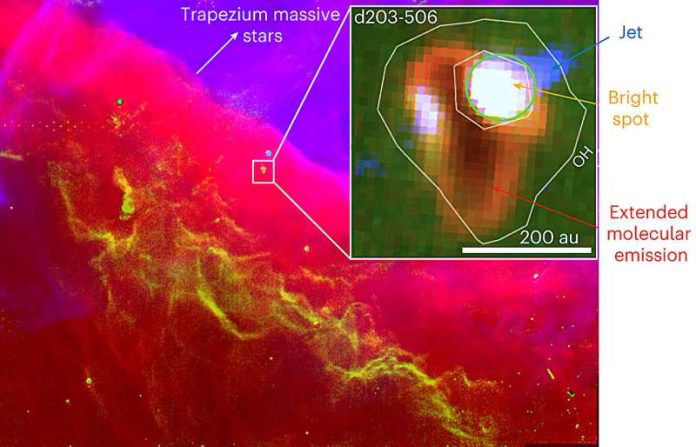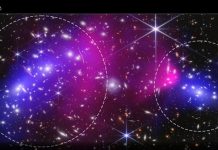
In an astounding breakthrough, an international team of astrophysicists, including Els Peeters and Jan Cami from Western University, has observed the cycle of destruction and re-formation of vast amounts of water within a planet-forming disk in the Orion Nebula’s heart.
This remarkable discovery, made possible through the innovative use of the James Webb Space Telescope (JWST) coupled with advanced quantum physics calculations, sheds light on the intricate processes that govern the lifecycle of water in space, a critical component for life as we know it.
Published in Nature Astronomy, this research is part of the PDRs4All Early Release Science program, one of 13 pioneering projects chosen to showcase the JWST’s capabilities.
The study, led by Marion Zannese, a Ph.D. student at University Paris-Saclay, represents a significant leap in our understanding of the cosmic journey of water, from its interstellar origins to its role in the formation of planetary systems.
The Orion Nebula, a cradle for developing planetary systems, provided the perfect backdrop for this investigation.
The planet-forming disk known as ‘d203-506,’ located within the nebula, undergoes a relentless cycle of water molecule destruction and re-formation due to the intense ultraviolet radiation from nearby massive stars.
This process effectively turns d203-506 into an interstellar laboratory, offering a window into the dynamic nature of cosmic water cycles.
The JWST played a crucial role in this discovery, capturing the faint signals of this process with unprecedented clarity.
“It is so impressive that in just a few pixels of observations, and focusing on a few of the lines, we can actually figure out that you have an entire ocean of water being evaporated every month,” Peeters remarked, highlighting the telescope’s extraordinary sensitivity.
This observation, a mere glimpse into the wealth of data collected, promises further revelations about the universe’s workings.
Understanding the formation and destruction of water in such environments is crucial for grasping how the water on Earth and, potentially, other planets came to be. Before the solar system’s formation, most of Earth’s water was created in the cold vastness of interstellar space.
Yet, some of this water may have undergone destruction and re-formation at higher temperatures during the early, tumultuous days of the solar system, a process now observed in the Orion Nebula.
The collaboration with quantum dynamics experts, including those from the Madrid Deep Space Communications Complex (Spain) and the Leiden Observatory (The Netherlands), was pivotal.
Their expertise allowed the team to trace the molecular journey from water molecule destruction—signaled by the release of hydroxyl molecules and photons—to its re-formation, a cycle that mirrors the potential history of Earth’s oceans.
This groundbreaking study not only highlights the JWST’s transformative impact on our understanding of the cosmos but also opens new avenues for exploring the fundamental processes that shape planetary systems and the potential for life within them.
As we continue to delve deeper into the cosmos, discoveries like this bring us closer to answering some of humanity’s most profound questions about our origins and the nature of life in the universe.
The research findings can be found in Nature Astronomy.
Copyright © 2024 Knowridge Science Report. All rights reserved.



